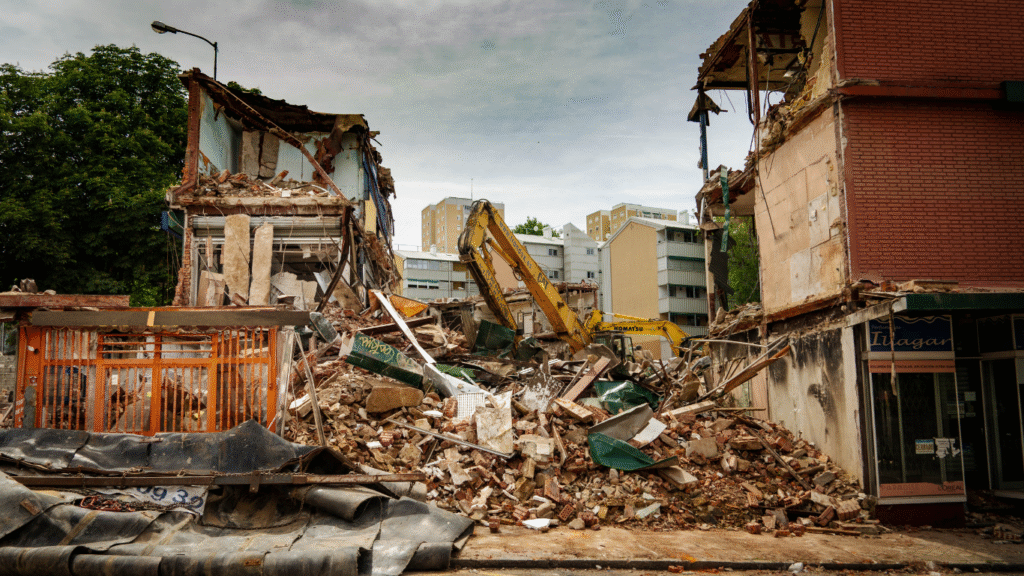In July 2024, Telangana launched HYDRA, short for Hyderabad Disaster Response and Assets Monitoring and Protection, to tackle urban challenges in Hyderabad. This agency, created by Chief Minister A. Revanth Reddy, focuses on disaster management, protecting public lands, and curbing illegal activities like encroachments on lakes and ponds. Covering 2,000 square kilometers up to the Outer Ring Road (ORR), HYDRA has already made headlines by reclaiming over 100 acres of land and demolishing illegal structures. But what is HYDRA in Telangana really about? This article explores its mission, responsibilities, controversies, and impact on Hyderabad’s growth. From flood control to safeguarding parks, HYDRA aims to make the city safer and better managed. Let’s break down what this agency does and why it matters to Telangana’s residents.
The Birth of HYDRA in Telangana
HYDRA, or Hyderabad Disaster Response and Assets Monitoring and Protection, was formed in July 2024 to address Hyderabad’s growing urban challenges. Chief Minister A. Revanth Reddy introduced it under the National Disaster Management Act to manage disasters and protect public assets. Covering the Telangana Core Urban Region (TCUR), which includes the Greater Hyderabad Municipal Corporation (GHMC) and areas up to the ORR, HYDRA coordinates with departments like the Water Board, Traffic Police, and GHMC. Led by senior IPS officer A.V. Ranganath, it has three wings: asset protection, disaster management, and logistical support. The agency’s goal is to streamline urban governance, prevent illegal encroachments, and ensure safety, making Hyderabad more resilient.
Why HYDRA Was Created
Hyderabad’s rapid growth has led to issues like flooding, traffic chaos, and land encroachments. HYDRA was formed to tackle these problems head-on, ensuring better disaster preparedness and protecting public spaces like lakes and parks. The agency aims to unify efforts across departments, replacing the older Enforcement Vigilance and Disaster Management (EV&DM) wing with a stronger, more focused system.
Leadership and Structure
HYDRA is led by A.V. Ranganath, a senior IPS officer, under the supervision of MA&UD Principal Secretary Dana Kishore. Its three wings—asset protection, disaster management, and logistics—work together to manage tasks like land reclamation and flood response. The Chief Minister chairs the governing body, ensuring high-level oversight and coordination with agencies like the police and HMDA.
HYDRA’s Key Responsibilities
HYDRA’s mission is broad, covering disaster response, asset protection, and urban management. It handles flood control, traffic coordination during emergencies, and protects public lands from illegal encroachments. The agency has reclaimed over 100 acres of government land and cleared illegal structures from 20 city ponds since its launch. It also inspects private properties for building violations and removes unauthorized hoardings. By working with agencies like the Indian Meteorological Department (IMD), HYDRA ensures better disaster preparedness, aiming to make Hyderabad safer and more organized.
Disaster Management Efforts
HYDRA’s Disaster Management Wing coordinates with the Disaster Response Force (DRF) to handle floods, storms, and other crises. It works with national and state agencies, using tools like the Disaster Response Information System to predict risks. This helps protect residents and properties during emergencies, especially in flood-prone areas near lakes and nalas.
Protecting Public Assets
A key focus is safeguarding public spaces like parks, lakes, and roads from encroachments. HYDRA has demolished illegal structures, including parts of high-profile properties, to reclaim government land. It enforces strict rules against illegal constructions and advertisements, ensuring public assets remain accessible and well-maintained for Hyderabad’s residents.
Controversies Surrounding HYDRA
HYDRA’s actions, like demolishing structures, have sparked debate. Some praise its efforts to reclaim lakes and prevent flooding, but others, including opposition parties like the Bharat Rashtra Samithi (BRS), accuse it of targeting political rivals. High-profile demolitions, such as part of actor Nagarjuna’s N-Convention Centre, drew attention when he claimed no prior notice was given. Critics on X argue HYDRA’s actions lack transparency, while supporters say it’s vital for the city’s future.
Political Accusations
The BRS claims Chief Minister Revanth Reddy uses HYDRA for “political vendetta,” targeting opposition leaders’ properties. They point to demolitions linked to BRS figures, while Congress denies bias, noting actions against their own leaders too. The Telangana High Court has questioned HYDRA’s legal standing, urging adherence to proper procedures.
Public and Legal Challenges
HYDRA’s demolitions, like those at Osman Sagar, have faced legal pushback. Property owners, including Nagarjuna, have sought court intervention, claiming unfair actions. Public sentiment on X is mixed—some support lake protection, but others worry about selective enforcement. The agency must balance its mission with legal and public scrutiny to maintain trust.
HYDRA’s Impact on Hyderabad
Since its launch, HYDRA has made a mark by reclaiming over 100 acres of land and clearing illegal structures from 20 ponds, helping prevent urban flooding. Its traffic coordination during rains has eased congestion in some areas. By protecting lakes like Osman Sagar and Himayat Sagar, HYDRA supports Hyderabad’s water supply and environment. However, its aggressive approach has raised concerns about fairness. The agency’s work is shaping Hyderabad into a more organized city, but its success depends on transparent and inclusive actions.
Environmental Benefits
HYDRA’s focus on clearing lake encroachments helps prevent flooding, a major issue in Hyderabad. By protecting water bodies like Thammidi Kunta and Osman Sagar, it ensures cleaner water sources and supports biodiversity. These efforts make the city more resilient to heavy rains, benefiting residents and boosting property values in safer areas.
Real Estate Implications
HYDRA’s regulations, like requiring a No Objection Certificate (NOC) for lakeside constructions, affect Hyderabad’s real estate market. Homebuyers must verify land use to avoid legal issues. While this ensures safer investments, it has sparked debates about fairness, especially after demolitions of commercial properties. HYDRA’s actions aim to create a more secure real estate landscape.
Future Plans for HYDRA
HYDRA’s future includes expanding its reach beyond the ORR, possibly into G.O. 111 areas, and amending laws to strengthen its powers. The Telangana government is drafting an ordinance to clarify its authority under acts like the Land Encroachment Act. With 72 teams already formed, HYDRA plans to add more staff and improve coordination with departments like Irrigation and Police. Its goal is to make Hyderabad a model for urban management, but it must address public concerns to succeed.
Expanding Jurisdiction
HYDRA aims to cover more areas, potentially including rural zones under G.O. 111. This expansion would strengthen its ability to protect lakes and government lands across Telangana. Chief Minister Reddy has directed officials to finalize these plans before the Assembly session, ensuring clear boundaries and resources for the agency.
Legal and Operational Growth
To address legal challenges, HYDRA is working on amendments to acts like the GHMC Act and WALTA Act. These changes will clarify its powers to remove encroachments and manage disasters. Adding staff from Police and Survey departments will boost its efficiency, ensuring smoother operations and better public service.
How Residents Can Engage with HYDRA
HYDRA encourages public participation through complaint systems like Prajavani, where residents report encroachments or illegal activities. Over 1,000 complaints have been filed, showing community involvement. Residents can verify property approvals with HYDRA to avoid legal issues. By supporting its efforts, like reporting illegal dumping, citizens help protect Hyderabad’s lakes and parks, ensuring a cleaner, safer city.
Filing Complaints
Residents can submit complaints about encroachments or illegal constructions via HYDRA’s Prajavani platform or its official website, hydra.org.in. The agency has received thousands of reports, leading to actions like pond cleanups. Clear, detailed complaints with evidence help HYDRA act swiftly, ensuring public spaces remain protected.
Staying Informed
To stay updated, residents can follow HYDRA’s announcements on its website or Telangana government portals. Checking property regulations, especially near lakes, helps avoid issues. Community awareness about HYDRA’s rules, like the NOC requirement for lakeside construction, ensures compliance and supports the agency’s mission.



